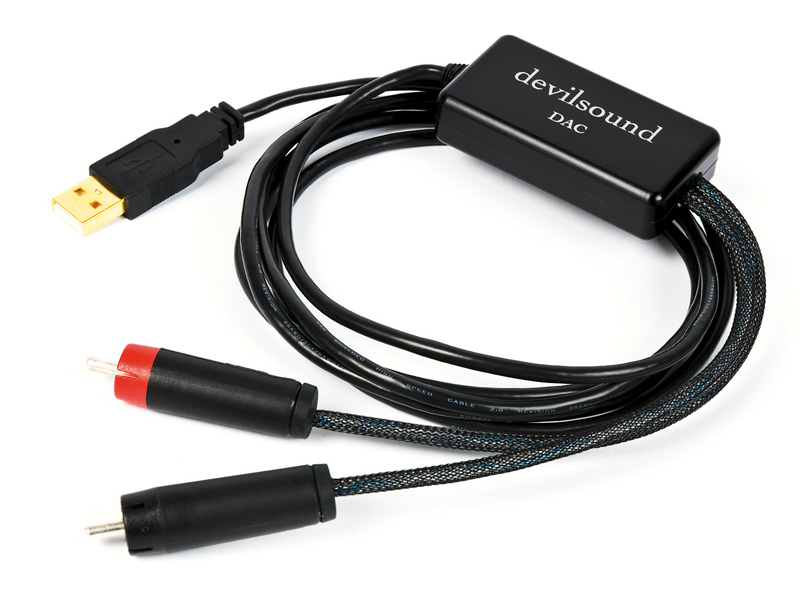TechRadar Verdict
The simplest possible solution for connecting a computer to a hi-fi; sound is lively and energetic with excellent timing and good tonal qualities. Well-recorded acoustic tracks show up a certain lack of detail, which also affects imaging and there's a trace of harshness which obscures subtle HF.
Pros
- +
Simple solution to an age old problem
- +
Good lively sound
Cons
- -
Some tracks lack detail
- -
Some harshness
Why you can trust TechRadar
Now and then, a product comes along that's such a good idea it seems remarkable that no one thought of it before. Or, perhaps, someone did think of it, but it was marketed so badly that it never caught on. Whatever the truth of the matter, it's now irrelevant as the Devilsound is, as far as we know, the first-ever cable to accept digital audio at one end and output analogue audio at the other!
And in a nutshell that is all it does. The trick would be impossible with regular S/PDIF digits, but a USB socket has extra pins in it that allow it to transmit DC power to connected devices.
Devilsound's ingenuity was in devising a circuit and its housing, small enough to sit in the cable, supported only by the analogue leads (which are short – just a handspan long, while the digital part is a couple of metres) and low enough in power consumption to operate from the five volt supply provided by the USB socket on your computer.
Because five volts isn't really much to play with, and certainly not enough to allow output levels of the usual 2V RMS variety that are typical of practically all CD players, the DAC incorporates some quite sophisticated power supply conversion to give higher voltages internally. These are then regulated down so that sensitive circuits are operating from a cleaner and more stable supply than the aforementioned five volts..
The digital receiver is one of the 'SpAct' family from Burr-Brown, while actual conversion to analogue is done by a pair of Analog Devices chips. That's pretty standard stuff, but a twist is provided here by the avoidance of digital filtering – and there's not much analogue filtering either, so this is effectively a filter-free DAC which allows a lot of aliasing to occur.
Technically that gives it a measured distortion figure of about 2 per cent, but the distortion is all ultrasonic. Within the audio band, performance is pretty good, with just a little noise and a hint of jitter to comment on.
Sound quality
At this price, the DAC market is currently dominated by the Cambridge Audio DacMagic, on which we recently heaped extravagant praise. Apart from the obvious difference in practical aspects, the Devilsound DAC is interesting, not least because sonically it is everything the Cambridge isn't.
Yes, they both reproduce recognisably the same piece of music, but where the Cambridge is neutral almost to a fault, this one is quite highly characterised. And the character is one which it's hard not to like.
That's certainly true with any lively and/or rough-edged musical style. There's just spadefuls of get-up-and-go in the sound and a rhythmic verve that many folks would willingly spend a lot more than £235 to achieve. Drum kits and electric guitars just bounce along, while close-miked vocals are immediate, communicative and highly convincing.
That's the plus side. The minus is more to do with classical music and, in general, more melodic, smoother, styles – especially those recorded simply in a natural ambience. Under these circumstances, the sound is much less assured and seems rather restricted spatially in both dimensions.
Interestingly, we were a touch disappointed when we tried MP3-derived material in any style, but if, you wish to use your computer as a proper audiophile server, you may well find this to be a little gem.
Follow TechRadar reviews on Twitter: http://twitter.com/techradarreview
